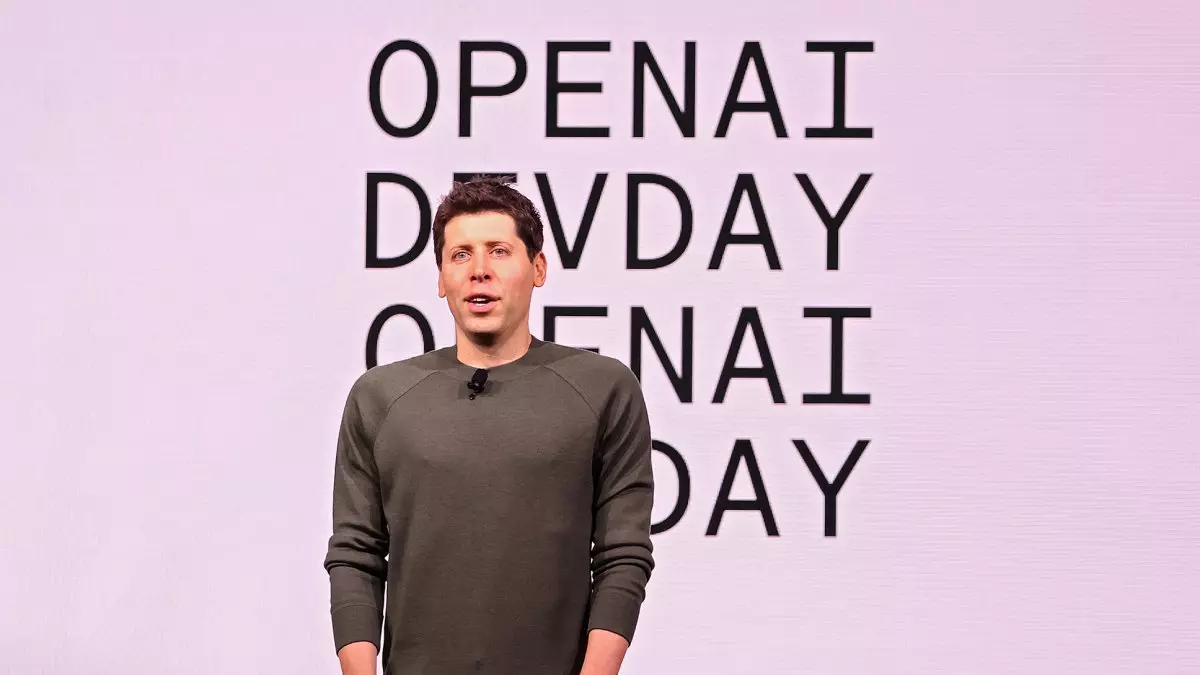OpenAI, a pivotal entity in the AI revolution, has undoubtedly experienced substantial growth and innovation. Yet, recent discussions, particularly a Reddit AMA featuring CEO Sam Altman, have unveiled some underlying obstacles faced by the organization—most notably, the deficiency in computing capacity. This limitation not only hampers the speed at which OpenAI can launch products but also necessitates complex decision-making regarding resource allocation in a landscape teeming with promising AI concepts.
The Complexity of Modern AI Models
In his AMA revelation, Altman highlighted the increasing complexity of AI models as a critical factor contributing to the delays in product releases. As artificial intelligence evolves, the models become more intricate and demanding, requiring disproportionate amounts of computational power. Established AI companies like OpenAI strive for constant improvement; however, the need for enhanced computational resources has overshadowed their quest for rapid commercialization. The sentiment is echoed within industry discussions—many analysts speculate that OpenAI is not merely facing technical bottlenecks but is also grappling with the challenges of scaling up the computing infrastructure that can adequately support their extravagant ambitions.
Reports have surfacing about OpenAI’s efforts to collaborate with Broadcom in engineering a specialized AI chip. This strategic venture aims to mitigate the current computational constraints, with expectations set for initial releases by 2026. Such partnerships are significant, as they underline the urgency OpenAI feels in bolstering its computational aptitude, which directly affects the pace of innovation. While this collaboration represents a promising step forward, it also emphasizes the high-stakes environment in which leading AI firms operate, where timely advancements are crucial to maintaining competitive positioning against rivals while meeting growing market demands.
Adding to the concerns surrounding OpenAI’s operational capabilities, Altman disclosed that the much-anticipated Advanced Voice Mode for ChatGPT—an innovation initially unveiled with elaborate visual functionalities—would not materialize as planned. This feature was first hinted at during an April press event and showcased impressive tech, but its rushed display raised eyebrows regarding its readiness. The postponement of voice-only versions and visual capabilities indicates a broader issue: while OpenAI is undeniably ambitious, it remains vulnerable to the pitfalls of pushing products into the market before fully realizing their potential.
Furthermore, the upcoming DALL-E release continues to lack a definitive timeline. Altman’s admission that no release plan is currently in place speaks volumes about the turbulent path ahead. Simultaneously, the introduction of Sora—OpenAI’s foray into video generation—has also faced technological obstacles that have left it lagging behind competing systems. This competition element introduces another layer of pressure on OpenAI to accelerate its product delivery while ensuring quality and stability.
Future Directions and Priorities
While the road ahead appears littered with challenges, Altman has asserted OpenAI’s steadfast commitment to fine-tuning and enhancing its offerings of reasoning models. The promise of upcoming features concerning image comprehension signifies a hopeful trajectory, even amidst current setbacks. Acknowledging the internal discussions over potentially allowing ‘NSFW’ content highlights OpenAI’s adaptive approach to user needs, balancing ethical considerations with market realities.
As the AI landscape continues to evolve, OpenAI must align its innovation strategies with its infrastructure capabilities. The pressures of maintaining relevance while ensuring product effectiveness are substantial, but these challenges offer an opportunity to grow resiliently and strategically. In an arena where pioneering efforts can easily tip over into mediocrity, how OpenAI navigates its complex relationship with computing resources will likely determine its success in the coming years.
In a world where advancements in artificial intelligence are expected at a rapid pace, the balance between ambition and operational readiness remains delicate. OpenAI’s journey serves as a reflection of the broader challenges confronting the AI industry, signifying the need for strategic planning and robust technological solutions as the demand for smarter AI tools continues to soar.

